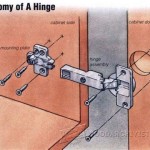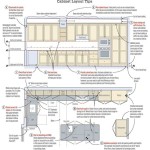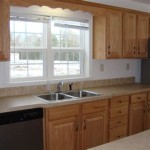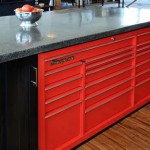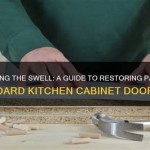Best Type of Plywood for Kitchen Cabinets
Choosing the right materials for kitchen cabinets is critical to achieving a durable, aesthetically pleasing, and functional space. Plywood, an engineered wood product composed of multiple layers of wood veneer glued together, is a popular choice for cabinet construction due to its strength, stability, and resistance to warping. However, not all plywood is created equal. Selecting the appropriate type of plywood for kitchen cabinets requires careful consideration of factors such as wood species, grade, core construction, and intended use. This article explores the various types of plywood suitable for kitchen cabinets, highlighting their strengths, weaknesses, and ideal applications.
Plywood's layered construction contributes significantly to its structural integrity. The alternating grain direction between each layer, called a ply, makes it more resistant to bending, twisting, and warping compared to solid wood. This stability is especially important in kitchen environments, where cabinets are exposed to varying levels of humidity and temperature. The glue used in the manufacturing process also plays a crucial role, as it affects the plywood's resistance to moisture and delamination.
The face veneer, the outermost layer of plywood, is responsible for the aesthetic appeal of the cabinet. Different wood species offer distinct grain patterns and colors, allowing for a wide range of design possibilities. The core of the plywood contributes to its overall strength and stability. Various core constructions exist, each with its performance characteristics. Selecting the appropriate combination of face veneer, core construction, and grade is essential for achieving desired results.
Understanding Plywood Grades
Plywood is graded based on the quality of its veneer faces. The grading system typically uses letters, with "A" being the highest grade and "D" being the lowest. An “A” grade veneer will be smooth and virtually free of knots or defects, while a “D” grade veneer can have numerous knots, splits, and other imperfections. Plywood is often graded with two letters, representing the quality of the front and back faces (e.g., A-B, B-C). The grade of the plywood directly impacts its appearance and suitability for different applications.
For kitchen cabinets, higher grades of plywood are generally preferred for exposed surfaces such as doors and drawer fronts. These higher grades provide a smoother, more uniform surface that is easier to finish and paint. Lower grades can be used for less visible components such as cabinet boxes, provided they meet the required structural standards. It's important to note that the grade only refers to the appearance of the veneer and does not necessarily reflect the structural integrity of the plywood. Therefore, always choose a plywood type that meets the performance requirements for the intended application, irrespective of its grade.
The grades commonly used are A, B, C, and D. In some cases, there is also a grade N, which stands for 'Natural'. This grade is used for plywood that is intended to be clear-finished and displays the natural beauty of the wood grain without being blemished by patches or repairs. Typically, N-grade plywood commands a premium price.
Below is a description of each grade:
- A Grade: This is the highest quality grade. It is smooth and paintable with a tight, repaired surface. It may contain only a few small, well-matched patches.
- B Grade: This grade allows for some minor defects such as small knots or repairs. It is also paintable.
- C Grade: This grade may contain tight knots, discoloration, and some splits. It is usually used for applications where appearance is not critical.
- D Grade: This is the lowest grade. It may contain large knots, knotholes, splits, and other defects. It is generally used for applications where strength is more important than appearance.
- N Grade: Top-quality and meant for natural finishes showcasing the wood’s features.
Common Plywood Types for Kitchen Cabinets
Several plywood types are commonly used in kitchen cabinet construction, each offering different characteristics regarding strength, appearance, and moisture resistance.
Hardwood Plywood: This type of plywood features a face veneer made from hardwood species such as maple, birch, oak, or cherry. Hardwood plywood is known for its strength, durability, and attractive grain patterns. It is a popular choice for cabinet doors, drawer fronts, and exposed cabinet sides. Hardwood plywood offers a wide range of finishing options, allowing for various design aesthetics. The cost of hardwood plywood can vary depending on the wood species and grade.
Softwood Plywood: Softwood plywood, such as plywood made from pine or fir, is another option for kitchen cabinets. It is generally less expensive than hardwood plywood but may not be as durable or visually appealing. Softwood plywood is often used for cabinet boxes or other components where appearance is less critical. It is also easier to work with and accepts fasteners well.
Marine Plywood: Marine-grade plywood is specifically designed for use in marine environments, where it is exposed to constant moisture and humidity. It is constructed with waterproof glue and features a void-free core. While more expensive than standard plywood, marine-grade plywood offers superior resistance to water damage and delamination. It is a suitable option for kitchen cabinets in areas with high humidity or potential water exposure, such as around sinks or dishwashers. However, it is often considered overkill for standard kitchen applications.
Medium Density Fiberboard (MDF) Core Plywood: Plywood with an MDF core combines the benefits of plywood faces with the smoothness and stability of MDF. MDF, made from compressed wood fibers and resin, provides a very smooth and uniform surface that is ideal for painting. This type of plywood is less prone to warping and splitting than plywood with a softwood core. However, MDF is more susceptible to water damage than solid wood or plywood, so it is essential to protect the edges and surfaces with a durable finish.
Factors to Consider When Choosing Plywood
When selecting the best type of plywood for kitchen cabinets, several factors should be taken into account to ensure the chosen material meets the project's specific requirements.
Moisture Resistance: Kitchens are inherently humid environments, so moisture resistance is a critical consideration. The glue used in the plywood construction significantly impacts its ability to withstand moisture. Plywood bonded with phenolic resin is more water-resistant than plywood bonded with urea-formaldehyde resin. For areas prone to moisture, such as around sinks and dishwashers, marine-grade or exterior-grade plywood may be the best choice.
Strength and Stability: The plywood should be strong enough to support the weight of the cabinet contents and resist warping or sagging over time. The thickness and core construction of the plywood affect its strength and stability. Thicker plywood and plywood with a void-free core are generally more robust. Hardwood plywood tends to be stronger than softwood plywood.
Appearance: The face veneer of the plywood determines the aesthetic appeal of the cabinets. Choose a wood species and grade that complements the desired design style. Consider the grain pattern, color, and presence of knots or other imperfections. If the cabinets will be painted, a smoother, higher-grade plywood is generally preferred. For clear finishes, a visually appealing wood species with a consistent grain pattern is ideal.
Budget: The cost of plywood can vary significantly depending on the wood species, grade, core construction, and thickness. Establish a budget upfront and choose a plywood type that balances performance and affordability. Consider using different plywood types for different cabinet components to optimize costs. For example, a higher-grade hardwood plywood can be used for doors and drawer fronts, while a lower-grade softwood plywood can be used for cabinet boxes.
Sustainability: If sustainability is a concern, look for plywood that is certified by the Forest Stewardship Council (FSC). FSC-certified plywood is sourced from responsibly managed forests. Consider using plywood with a recycled content core or plywood made from rapidly renewable resources.
In summary, the selection of optimal plywood for kitchen cabinets is a multifaceted decision necessitating a careful evaluation of factors ranging from veneer grade to moisture resistance. Prioritizing these critical elements ensures the longevity, visual appeal, and overall functionality of the kitchen cabinets. The careful choice of materials, considering budgetary constraints and sustainability concerns, will prove invaluable in constructing a kitchen that meets functional and aesthetic needs.

Which Plywood Is Best For Modular Kitchen Designcafe

Which Plywood Is Best For Modular Kitchen Designcafe

How To Choose The Best Plywood For Cabinets

Which Plywood Is Best For Modular Kitchen Designcafe

6 Secrets To Best Plywood For Your Kitchen Cabinets Duroply

How To Choose The Best Kitchen Cabinet Design In Singapore

Which Plywood Is Best For Modular Kitchen Designcafe

Choosing The Best Type Of Plywood For Cabinets Columbia Forest S

Choosing The Best Type Of Plywood For Cabinets Columbia Forest S

Waterproof Plywood The Ultimate And Best Guide On Types Of
Related Posts


